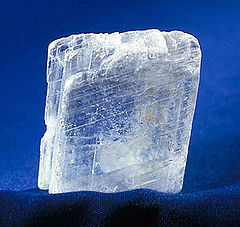 |
| Image courtesy of Forbes.com |
I'm sure countless of ideas came across our mind day in and out, but how many of us really turn those ideas into reality? The infographic above shows how these big household names all originated from a simple idea that all of us might be able to think of. Since getting an idea is nothing so hard, why is it so difficult for us to realise them?
Lesson 3- "Big things start small."
We're now in week 9, 6 weeks more until the end of this semester. What we have done so far was collecting data, analysing data, then collecting and analysing data again. I knew some of our classmates started to feel this process to be a bit too dreadful. We had only 1.5 semester (20 weeks) before the launching of our final product, and yet we haven't had the faintest idea of what product are we making. Some of them were already losing their nerves, some others were so ambitious that they jump a step ahead even before we got a conclusion from our previous studies. Our group so far seemed to be the chillest of all, because we know, "big things start small'.
Yes, why so panic, when we would reach this step anyway? So, a brief recap of what we have done so far, we did a more general market survey to know the food preference, eating habit, etc of the general public, then moved on to a more specific consumer study to understand what exactly the children wants. From there, we came to a conclusion that the food we produce should:
1. be small portion, and convenient;
2. be carbohydrate based;
3. contain processed meat or hidden vegetables
4. be something the children preferred or are familiar with.
Making use of these information we collected, now it's the time for us to let our imaginations run wild, we finally started working on our final product! Not so fast, haha, we haven't decided our product yet. So, we started with coming up ideas for the product. How? by ideation!
 |
| Source: Hadjisofocli, D.C., 2014. Ideation |
So yeah, ideation sounds fancy, but it's actually a very practical tool/approach for creating ideas. Simply put, it's putting ideas into action. As I mentioned in the beginning, everyone has ideas, but what makes some ideas work, while others remain as a fantasy? Many people would say: "Oh, because some people are copy cats, they just copy ideas from other people, of course it can't work". But I don't buy this, 'cause I believe that nothing is original. So, how do we convince people so they buy your ideas?
Okay, before I get to that, let's first talk about the ways of creating ideas. I did a simple google search on the keyword "ideation technique", 401,000 results were found in 0.38s. There are plenty of methods to come out with ideas, but the most common and convenient way is to carry out brainstorming. Two heads are always better than one, no?
 |
| Even if there are conflicting ideas. A little conflict is always welcome to spice up the group dynamic... ;) |
Yes, our group also brainstormed to come out with our ideas, and it did get a little heated at times like the picture up there. However, the whole session was always guided by the criteria of the food we set in the beginning, so we didn't really get off track. In addition to that, we also used white boarding to facilitate the brainstorming session. We threw our ideas on the whiteboard so everyone could see and so we do not forget and missed out the ideas. Then, we fine tuned all the ideas and organised them into 10 ideas, which we named them alpha-concepts..
 |
| Our scribbles on the white board... |
So, back to the question just now, what makes some ideas 'greater' than the others, and why some ideas are able to realise while others remain as fantasy? It all goes to one word-- documentation. Ngawww, not again... *groans* Isn't ideation all about being fun and innovative, why are we back to the boring stuff?? Nope, nope, if you're thinking like that, you're getting yourself a big trouble. You think you can immediately come out with ideas when you need them? The human brain is not a robot, they can't store every single information, especially those that are not frequently used. So, putting ideas into papers (be it the literal paper or its electronic counterpart) is a great way to keep track of all the ideas. Now you have your ideas recorded, innit more convenient for you when you wanna refer back?
However, there are also skills in recording down this idea, it's not just about merely jotting down the ideas somewhere. It's the best for you to set up a system to record all these ideas. How? by using a template. A template gives you a guideline on what should be recorded down. Other than the concepts and specification, it is very important to jot down the date and the team involved. This is to back you up in case one day someone has a similar idea as yours, you can prove that this is not a plagiarised work, simply by the date and all these scripts. Of course, it is also essential to justify the concepts so that people understand your point of view and your reasons of coming up with this idea even if it may sound silly. Do not get defeated when people do not agree with you. Have faith in yourself, 'cause after all, what doesn't kill you makes you stronger.
So, you get it now why those big companies can succeed with just a simple idea? They dare to dream big, and believe in them, and most importantly, they put those ideas into action. That's what matters most.
That's basically what I have to say for today. To end the post, I shall present you the 10 alpha-concepts our group created. Hope you like it, and please do not hesitate to give me some feedback!
 |
| Beet root burger with spicy honey sauce sandwiched in carrot bun. |
 |
| Brown rice crisps quiche |
 |
| Crispy spring roll |
 |
| Chick pea pie |
 |
| Vegetable chips |
 |
| Pizza roll |
 |
| Brown glutinous rice ball |
 |
| Sweet potato roti canai |
 |
| Traffic light nuggets |
 |
| Waffle kebab |
Dong







































